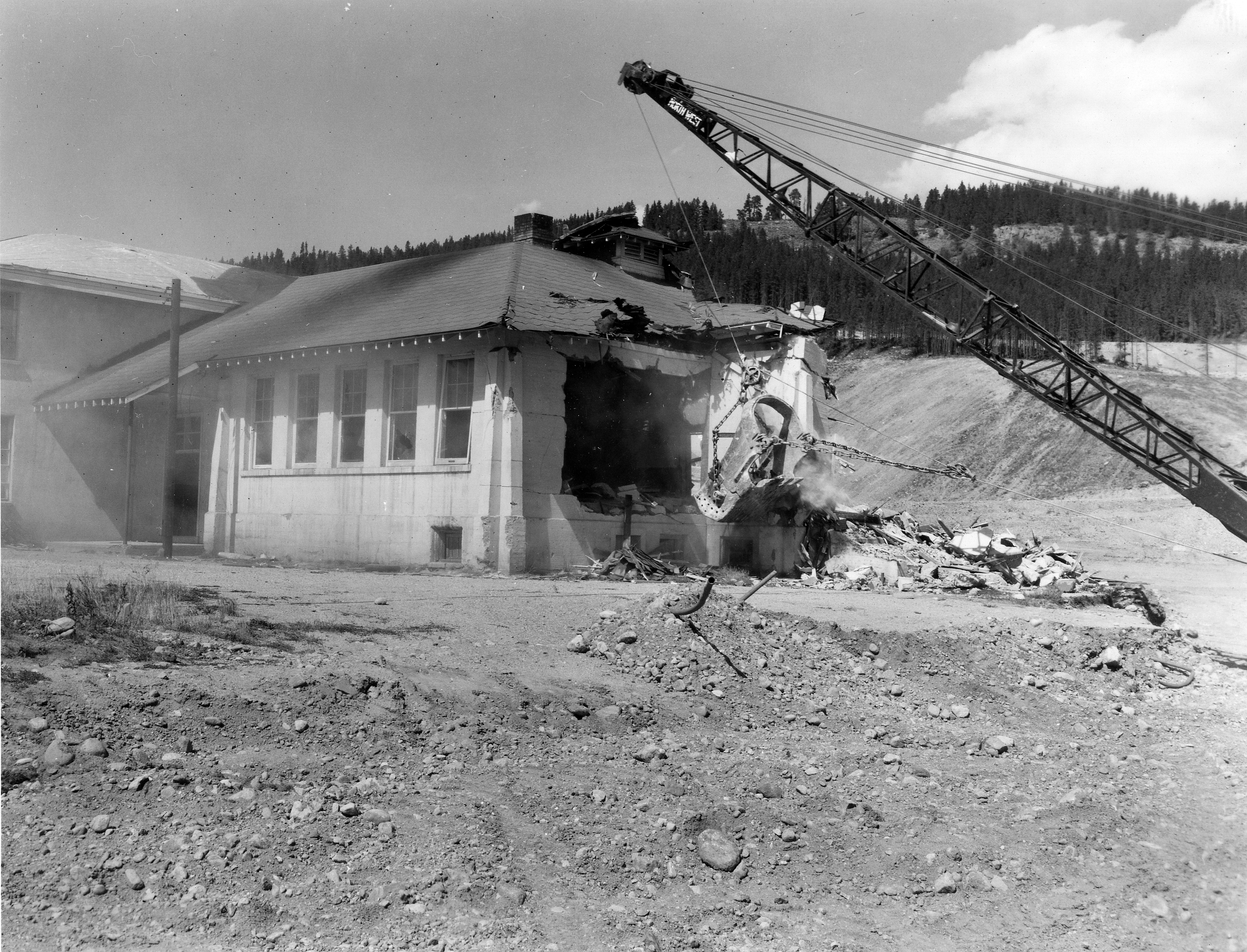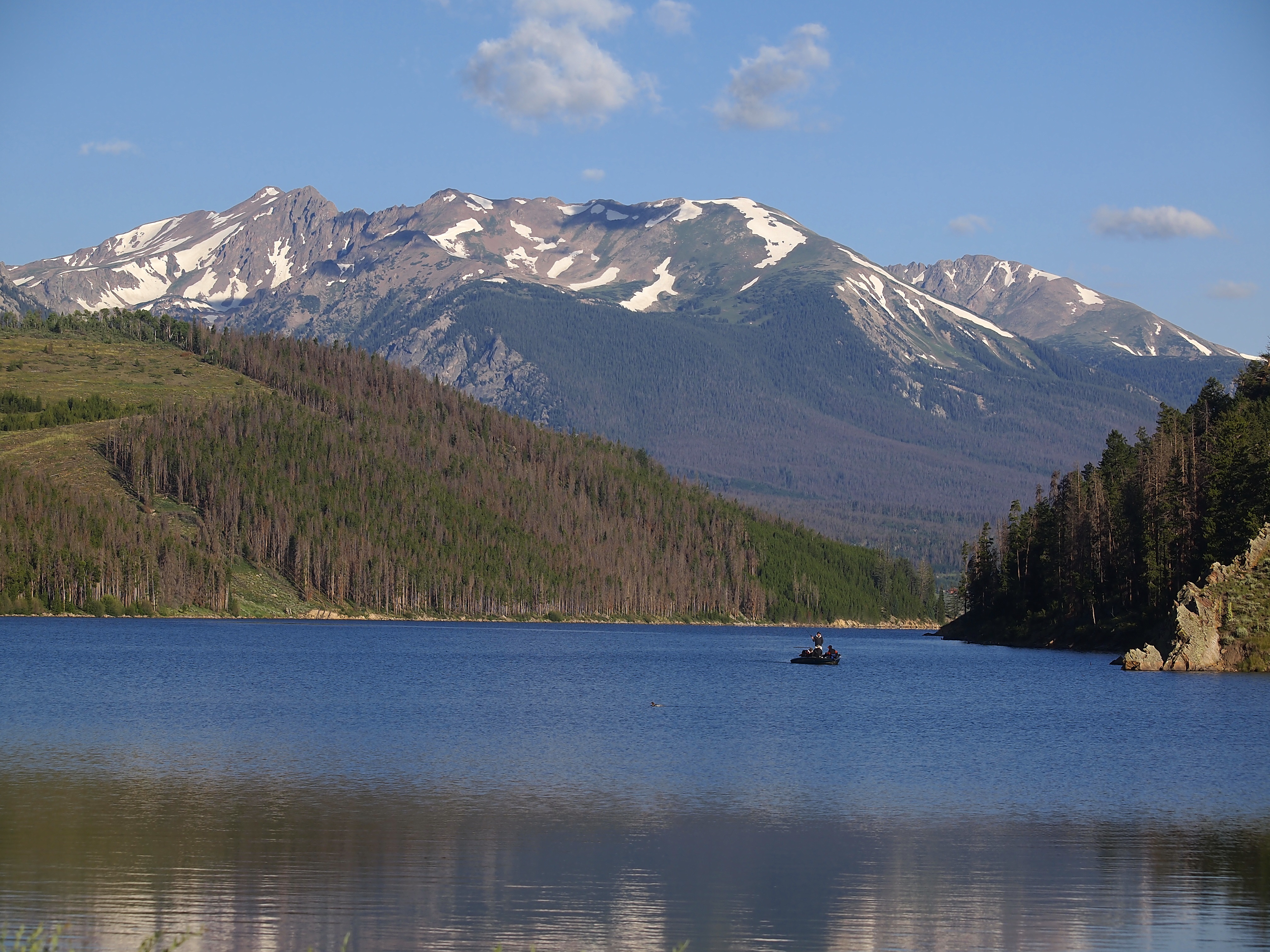
Dillon Reservoir celebrates half-century of service
Dillon was incorporated in 1883 at the site of a trading post and stage stop. It then scooted closer to the railroad, and a second time closer to three rivers: the Blue, the Ten Mile and the Snake, according to the town’s website.
For the third move, Denver Water bought the entire town, moving several structures and town features, including a church and a cemetery, and inundated the area with a reservoir.
Now the town sits on the east shore, and Dillon Reservoir, Denver’s largest, is celebrating 50 years as one of the Front Range’s most important water storage sites.
Moving a town for water
Denver’s $77.6 million Blue River Diversion Project was a massive plan to divert water from the West Slope to the East Slope. It included building the Harold D. Roberts Tunnel, which conveys water from Dillon Reservoir through a 23.3-mile aqueduct to the South Platte River, as well as buying land, securing water rights and building Dillon Dam.
Water leaders began tossing around the idea in the early 1900s when it became apparent that Denver could not subsist on South Platte River water alone. After years of geologic studies, engineering reports and legal wrangling, Denver Water began making formal plans to build the project. During the Great Depression, Denver Water bought property near the reservoir at tax sales. By the 1950s, according to the book, Dillon, Denver and the Dam, Denver Water owned three-fourths of the town.
Lawyers worked to buy the rest of the town, offering to help people move structures or rebuild on a site east of the reservoir.
“The old town of Dillon is almost a memory – its former site will eventually lie deep beneath the waters of Dillon Reservoir,” a 1963 customer newsletter announced. “An attractive site, among the fir and evergreen was set aside for the new Dillon when construction started on the dam.”
Working on the project
Dick Prestrud remembers the old town– and its migration to the new site – very well. His father owned the local Conoco station, and his family attended church in the same building that was trailered to the new town. He grew up in the old town and lived in Summit County most of his life. He also worked on the dam and Roberts Tunnel as an equipment oiler and as a heavy equipment operator.
“I started playing with dirt as a three-year-old and never quit,” said Prestrud, who moved to Wyoming a little more than a decade ago.
For four years, Prestrud worked with crews building the Roberts Tunnel. He started by digging gravel for cement, and when that was over, he became one of a handful of crewmembers to work the entire length of the tunnel, pulling cement in and out of the mountain and cleaning the bottom of the muddy tunnel. One time while working in the tunnel, his truck’s motor broke down and the lights went out. He had to turn around and trudge through 18 inches of water for four miles for help.
“I was much younger then, and that thing didn’t bother me,” he said with a laugh.
Later, when construction on the dam began, Prestrud spent five years working 12-hour shifts, often for six days a week, changing oil and air filters on heavy equipment. Even at the time, he knew he was part of something monumental.
“The people on the Denver Water Board had a lot of foresight,” he said. “To grow, they had to have water. I think it’s quite an accomplishment.”
His family remembers watching the town move, their church being towed over the new dam road and other buildings being demolished. His wife, Norma, said they have fond memories of the old town, as well as the reservoir, and said the project brought much-needed prosperity to the small community while delivering an important supply of water to the Front Range.
Looking to the future
Originally, the board of Water Commissioners planned to build a small dam and diversion structures to send water to the tunnel. But the board rethought those plans, opting instead to build what became Denver Water’s largest reservoir.
“That was a really good decision by the board,” said John Bambei, chief of Engineering. “It was an important asset built by forward-thinking folks at Denver Water.”
Building Dillon Reservoir impacted the federally regulated Green Mountain Reservoir, which meant Dillon required support from the U.S. government. Attorney Mike Walker, who was in high school in Brighton at the time of the dam’s construction, remembers hearing stories about Dwight Eisenhower fishing on the Fraser River with his Denver friend and financial advisor, Aksel Nielsen. During those fishing trips, Nielsen stressed the importance of building Dillon.
“That shows how important the project was,” Walker said. While some residents were angry about their town moving, the reservoir has become as important as “an anchor store to a mall in Summit County,” bringing tourism, employment and recreation to the mountain community.
“Having that water supply has given the board a safety valve that they wouldn’t have had if they were just relying on East Slope water,” Walker said. “They realized the importance of that water. It was the only way the Front Range would have a sustainable future.”



